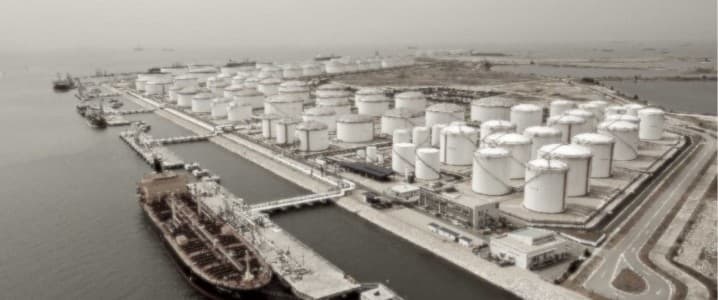-
Tehran inaugurated Thursday the terminal in Jask, on the Gulf of Oman, allowing tankers to avoid the Strait of Hormuz
-
Commentators contend the move might not curb global price volatility but could help Tehran ramp up exports
A new Iranian oil terminal that opened this week is a strategic move that enables the major crude exporter to bypass a global chokepoint and boost sales if punishing US sanctions are lifted, analysts say.
Tehran inaugurated Thursday the terminal in Jask, on the Gulf of Oman, allowing tankers to avoid the Strait of Hormuz — a passage less than 40 kilometres (25 miles) wide at its narrowest point, and where US and Iranian naval vessels have faced off in the past.
Commentators contend the move might not curb global price volatility but could help Tehran ramp up exports if damaging US sanctions are lifted, a move that depends on the future of a 2015 nuclear deal that currently hangs by a thread.
Simmering tensions in the Strait — a vital shipping lane for about one fifth of world oil — sparked surging prices early last year before the coronavirus pandemic crushed the market.
Prices then crashed and even briefly turned negative, before rebounding sharply on resurgent demand as economic activity recovered.
If Iran can export oil via Jask it will reduce the number of tankers that pass through “the world’s most important chokepoint for waterborne crude,” Rystad Energy analyst Bjornar Tonhaugen told AFP.
“This (new terminal) may reduce the risk premium of crude prices,” noted Tonhaugen.
“Iran has now a strategic ability to keep some of its oil exports to the world market running in… an extreme event.”
But, he cautioned, this in itself will not dampen disruption to the world oil market, as most of the other countries in the Gulf export via oil from terminals located on the inside of the Strait.
Iran is the fourth biggest crude producer within the Organization of the Petroleum Exporting Countries (OPEC).
Sanctions issue
Iran built a 1,000-kilometre (625-mile) pipeline to carry oil from Goreh in the southwestern Bushehr province to Jask.
Its other main terminal is in the Gulf port of Kharg, which is accessed via the Strait.
Iran, at odds with the United States since its revolution in 1979, has faced punishing US sanctions since former US president Donald Trump unilaterally withdrew from a landmark 2015 Iran nuclear deal.
Their forces have been on the brink of conflict twice since June 2019 amid heightened tensions in the Gulf.
But, say analysts, some prospects have emerged for a deal, and this could be another factor behind the Jask terminal.
Tehran has held talks since April in Vienna with the agreements other state parties — Britain, China, France, Germany and Russia — and Trump’s successor Joe Biden has signalled he is ready to return to the accord.
“Iran’s oil industry is eyeing an end to sanctions,” said PVM Associates analyst Stephen Brennock.
“The fact it is opening (the Jask terminal) now could be a signal to the market that Iran can ramp up quickly once sanctions are removed,” remarked analyst Chris Midgley at S&P Global Platts.







